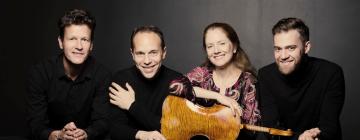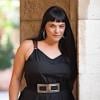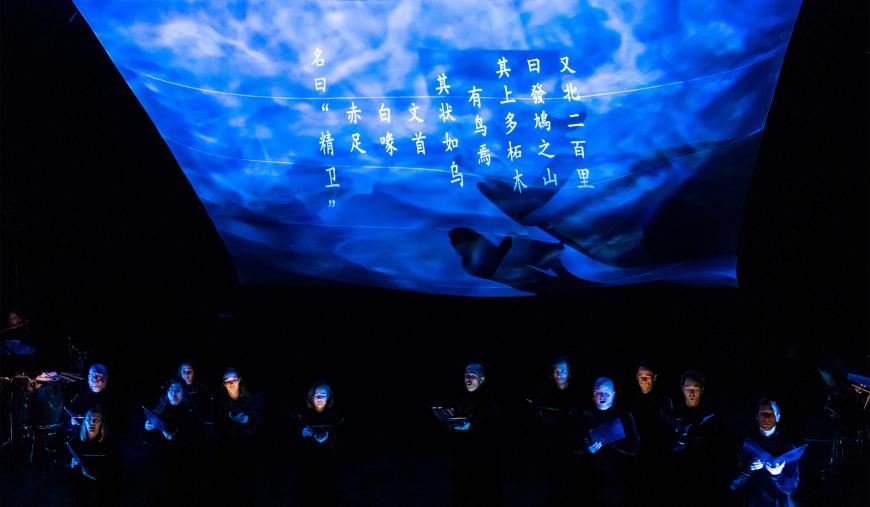
In a certain light, the myths at the center of composer Huang Ruo’s Book of Mountains and Seas are simple. They are extremely economical in their language, laying out the action in plain language. In a postconcert conversation, Ruo and director and production designer Basil Twist talked about mirroring this directness in their creative choices.
But so often, “simple” is a bluff. The chosen texts for this work of “vocal theater,” which are taken from a fourth-century Chinese compilation, offer multivalent commentary on nature, power, desire, and extractive brutality. And in embodying them, Ruo and Twist encourage a deep consideration of these stories’ relevance and ambiguity.
Book of Mountains and Seas, developed with Beth Morrison Projects, elegantly crafts the dramatic tension of an operatic story without stifling the open-endedness of the source texts. This balance was deeply compelling in Wednesday’s performance at Santa Monica’s BroadStage, presented as part of Los Angeles Opera’s Off Grand series. (The production was in the Bay Area, at Stanford Live, the weekend before.)
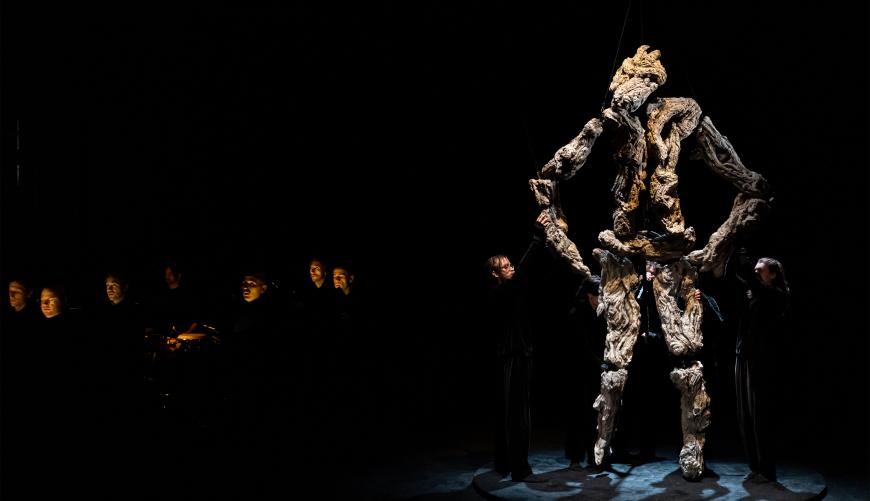
Ruo’s music, scored for vocal ensemble and two percussionists, takes an unhurried approach in this project. Lengthy episodes of vocal writing in an invented “nonlanguage” contextualized each statement of plot as a beat within a dramatic arc, allowing for the visual storytelling to develop and for the listener to consider the multiple valences of each turn.
Book of Mountains and Seas is also remarkably wide-ranging in its pursuit of musical ekphrasis. Sustained, minimalistic harmonies evoke the creation of the world in the opening “The Legend of Pangu.” In “The Spirit Bird,” modular figures in close canon animate the strife of the princess Nǚ Wá. But few moments in the work inhabit merely one of these registers. The mournful baritone aria which opens “The Legend of Ten Suns,” for instance, soon becomes studded with quavering figures and ululations, which intensify and recur in several voices as the suns fly away from their determined courses. A later, medieval section of the scene eventually gives way to densely packed, phased, chirping entrances.
Though evocative, Ruo’s language is demanding, too. Throughout the performance, the vocal ensemble Ars Nova Copenhagen attacked the piece’s prickliest corners without hesitation. The spiky rhythmic tags that punctuate the opening sustained unisons of “Pangu” were distinct but not disruptive. And daunting acres of rapid quintuplets in the finale galloped, though the scene’s first half could have benefited from a slight reduction in tempo.
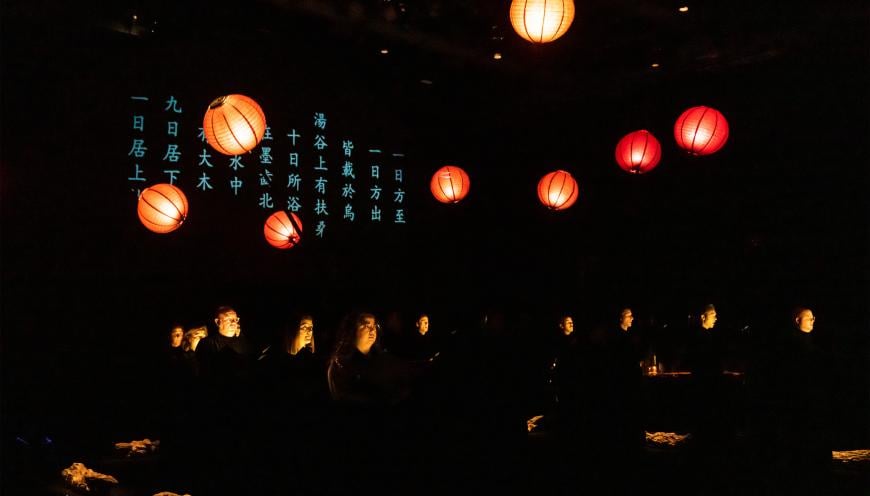
The vocal ensemble commanded an enviably wide range of temperatures, from the purity of the closing harmonies of “Pangu” to the warmth of the yawning final chord of “Kuā Fù Chasing the Sun.” Ars Nova’s unflagging precision was all the more impressive given the lack of readily available pitch reference from the percussive accompaniment.
That instrumental accompaniment, though spare, was often highly supportive. The resonance of singing bowls helped bolster the lyricism of “Ten Suns.” Elsewhere, a bass drum rumble underscored Nǚ Wá’s descent into the sea. In other pivotal moments, the percussion acted as instigator or intensifier.
Ruo chose to limit his accompaniment out of a desire to mimic the vocal-percussive limitations of humanity’s earliest music, and this embrace of limited materials heightened the significance of percussive textures in their moments of primacy. In “Kuā Fù,” percussionists Erica Hou and Yuri Inoo heralded the pursuit of the scene’s title with a well-weighted, highly interactive bass drum duet. Later, scraped chimes added edge to the drama of “The Spirit Bird.”
Working with six puppet masters, Twist also stuck to the edict of an economy of materials. Though elegant from the outset, the visual storytelling only deepened as the opera progressed. Faux-driftwood casts, which depicted the face of the giant Pangu in the opening story, were seamlessly recast as Nǚ Wá’s dragon pursuer in the second, Hou Yì’s bow in “Ten Suns,” and Kuā Fù’s straining limbs in the finale.
Twist and his collaborators generated incredible pathos from even simpler elements — a silk cloth signifying water and a collection of lanterns standing in for suns. The slow orbit of those suns in the third scene, the result of remarkable strength and coordination from all the evening’s puppeteers, was jaw-droppingly celestial.
In both its musical and visual storytelling, Book of Mountains and Seas animates ordinary materials to create something extraordinary. This production will undoubtedly continue to engross audiences across the country.
